Related Research Articles
Stuart Alan Rice is an American theoretical chemist and physical chemist. He is well known as a theoretical chemist who also does experimental research, having spent much of his career working in multiple areas of physical chemistry. He is currently the Frank P. Hixon Distinguished Service Professor Emeritus at the University of Chicago. During his tenure at the University of Chicago, Rice has trained more than 100 Ph.D. students and postdoctoral researchers. He received the National Medal of Science in 1999.

Joachim Sauer ForMemRS is a German quantum chemist and professor emeritus of physical and theoretical chemistry at the Humboldt University of Berlin. He is the husband of the former chancellor of Germany, Angela Merkel. He is one of the seven members of the board of trustees of the Friede Springer Foundation, together with former German president Horst Köhler and others.
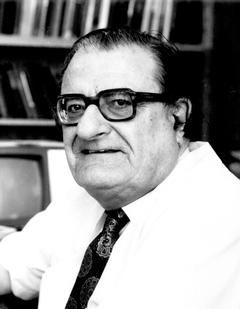
Michael James Steuart Dewar was an American theoretical chemist.

Leo Radom is a computational chemist and Emeritus Professor of Chemistry at the University of Sydney. He attended North Sydney Boys High School. He has a PhD and a DSc from the University of Sydney and carried out postdoctoral research under the late Sir John Pople. Previously, he was Professor at the Research School of Chemistry at the Australian National University in Canberra, Australia. He has published over 460 papers.
Rodney Joseph Bartlett is Graduate Research Professor of Chemistry and Physics, University of Florida, Gainesville, US.

Henry Frederick "Fritz" Schaefer III is a computational and theoretical chemist. He is one of the most highly cited chemists in the world, with a Thomson Reuters H-Index of 121 as of 2020. He is the Graham Perdue Professor of Chemistry and Director of the Center for Computational Chemistry at the University of Georgia. Before becoming professor at Georgia he was professor at University of California, Berkeley and in 2004, he became Professor of Chemistry Emeritus, at UC Berkeley

Kendall Newcomb Houk is a Distinguished Research Professor in Organic Chemistry at the University of California, Los Angeles. His research group studies organic, organometallic, and biological reactions using the tools of computational chemistry. This work involves quantum mechanical calculations, often with density functional theory, and molecular dynamics, either quantum dynamics for small systems or force fields such as AMBER, for solution and protein simulations.

Martin Karplus is an Austrian and American theoretical chemist. He is the Director of the Biophysical Chemistry Laboratory, a joint laboratory between the French National Center for Scientific Research and the University of Strasbourg, France. He is also the Theodore William Richards Professor of Chemistry, emeritus at Harvard University. Karplus received the 2013 Nobel Prize in Chemistry, together with Michael Levitt and Arieh Warshel, for "the development of multiscale models for complex chemical systems".

Axel Dieter Becke is a physical chemist and Professor of Chemistry at Dalhousie University, Canada. He is a leading researcher in the application of density functional theory (DFT) to molecules.
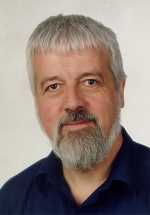
Walter Thiel was a German theoretical chemist. He was the president of the World Association of Theoretical and Computational Chemists (WATOC) from 2011.
Angela K. Wilson is an American scientist and former (2022) President of the American Chemical Society. She currently serves as the John A. Hannah Distinguished Professor of Chemistry, associate dean for strategic initiatives in the College of Natural Sciences, and director of the MSU Center for Quantum Computing, Science, and Engineering (MSU-Q) at Michigan State University.
Frank Neese is a German theoretical chemist at the Max Planck Institute for Coal Research. He is the author of more than 440 scientific articles in journals of Chemistry, Biochemistry and Physics. His work focuses on the theory of magnetic spectroscopies and their experimental and theoretical application, local pair natural orbital correlation theories, spectroscopy oriented configuration interaction, electronic and geometric structure and reactivity of transition metal complexes and metalloenzymes. He is lead author of the ORCA quantum chemistry computer program. His methods have been applied to a range of problems in coordination chemistry, homogeneous catalysis, and bioinorganic chemistry.
Eric R. Bittner is a theoretical chemist, physicist, and distinguished professor of chemical physics at the University of Houston.
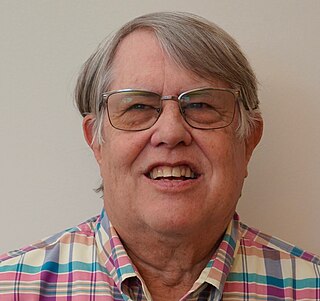
James R. Chelikowsky is a professor of physics, chemical engineering, and chemistry at The University of Texas at Austin. He is the director of the Institute for Computational Engineering and Sciences' Center for Computational Materials. He holds the W.A. "Tex" Moncrief Jr. Chair of Computational Materials.
Amalendu Chandra is an Indian theoretical physical chemist, a professor and the head of the Department of Chemistry at the Indian Institute of Technology, Kanpur. He is known for his microscopic theories and simulations on liquids, interface and clusters. He is an elected fellow of the Indian Academy of Sciences and the Indian National Science Academy. The Council of Scientific and Industrial Research, the apex agency of the Government of India for scientific research, awarded him the Shanti Swarup Bhatnagar Prize for Science and Technology, one of the highest Indian science awards, in 2007, for his contributions to chemical sciences.
Erin Johnson is a Canadian computational chemist. She holds the Herzberg–Becke Chair at Dalhousie University. She works on density functional theory and intermolecular interactions.

Laura Gagliardi is an Italian theoretical and computational chemist and the Richard and Kathy Leventhal Professor of Chemistry and Molecular Engineering at the University of Chicago. She is known for her work on the development of electronic structure methods and their use for understanding complex chemical systems.
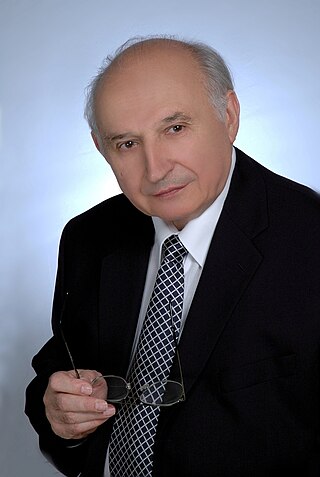
Imre Gyula Csizmadia was a Canadian Hungarian chemist, university professor, external member of the Hungarian Academy of Sciences.
Donald F. Weaver is a Canadian chemist and neurologist based at the Krembil Research Institute, University Health Network, University of Toronto, Canada. He is Senior Scientist of the Krembil Research Institute and Professor of Neurology, Chemistry, and Pharmaceutical Sciences, University of Toronto. He is a Fellow of the Royal College of Physicians (Canada), Fellow of the Chemical Institute of Canada, and Fellow of the Canadian Academy of Health Sciences.
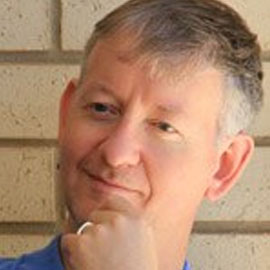
Peter Malcolm Wallace Gill is a New Zealand theoretical and computational chemist known for his contribution to density functional theory (DFT). He is an early and main contributor to the computational chemistry software Q-Chem and was the president of the company during 1998–2013. He is especially known for developing the PRISM algorithm for evaluating two-electron integrals and linear-scaling DFT, as well as self-consistent field method for excited state electronic structure.
References
- 1 2 3 4 5 6 7 Burford, Neil (2010). "Tribute". Canadian Journal of Chemistry. 88: xi-xiv. doi:10.1139/v10-901.
- 1 2 3 4 5 6 7 Wetmore, Stacey; Schaefer III, Henry (2016). "Introduction". Canadian Journal of Chemistry. 94: vi. doi: 10.1139/cjc-2016-0553 .
- ↑ "Russell Boyd - Department of Chemistry". Dalhousie University. Retrieved 4 September 2017.
- ↑ "Endowed Chairs in the Department of Chemistry at Dalhousie University". Endowed Chairs in the Department of Chemistry at Dalhousie University.
- ↑ "Google Scholar". Google Scholar. Retrieved 5 November 2020.
- ↑ "Wiley -The Quantum Theory of Atoms in Molecules: From Solid State to DNA and Drug Design". Wiley. Wiley VCH. Retrieved 4 September 2017.
- ↑ "World Association of Theoretical and Computational Chemists". World Association of Theoretical and Computational Chemists.
- ↑ "Chemical Institute of Canada Awards Handbook" (PDF). Chemical Institute of Canada.
- ↑ "Members of the Bureau of the International Union of Pure and Applied Chemistry" (PDF). IUPAC. Retrieved 12 July 2017.